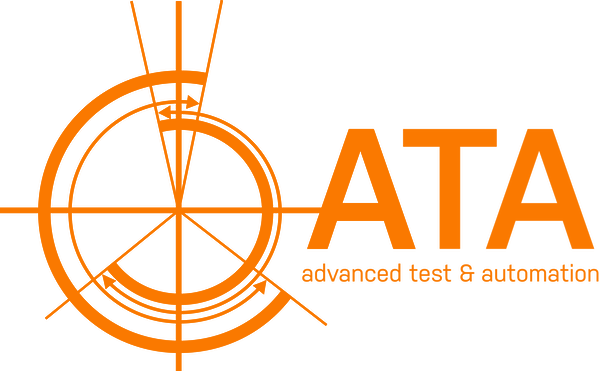Air contamination in oil is a serious condition. There are five problems associated with aerated oil that can be deadly to lubrication components, like oil pumps.
Read MoreWith proper measurements one can quantify the susceptibility of one's design or component to the negative effects of aeration.
Read MoreThere are a number of ways to introduce air into the oil to obtain a certain level of aeration. There are two predominant methods for achieving oil aeration: suction port t-fitting and direct injection.
Read MoreApart from the ingress of debris, the greatest danger to any design of a pump is cavitation. The phenomenon can be found in centrifugal (i.e. impeller) or positive displacement (i.e. gear, gerotor or vane) pumps, in both oil and coolant applications. Excessive cavitation can lead to erosion damage. It is important to understand how cavitation occurs as there are some misconceptions and confusion on this topic.
Read MoreMany OEMs are battling to improve vehicle durability, increase efficiency and reduce noise, but are struggling to find the answers. Unfortunately, many of the recent design trend are forcing higher aeration levels, and far too many OEMs are unaware.
In the pursuit of greater efficiency, many OEMs are making design decisions that may amplify the effects of oil aeration. Air bubbles may seem benign, but they can detrimentally affect the performance and durability of engines, drivelines and hydraulic equipment.
Read MoreAs the global interest for clean energy alternatives increases within the automotive industry, so does the requirement of efficiently storing electricity. The latest trends in electric vehicle technology have led to the development of high-voltage storage solutions, all backed by the need for increased efficiency and quicker charge times.
Read MoreATA Inc. was awarded a project from an existing client to build test systems for production verification testing on six different engine oil pump models. We delivered on the client's needs for an accurate and interchangeable tool to verify pump performance and functionality using a grouping layout for the individual test cells, and by employing laser marking stations.
Read MoreTorsional Vibration in shafts and other mechanical systems
The torsional vibration of a crank or motor shaft is an important factor in the suitability and reliability of a system design. Finite element modelling can predict the natural vibration and forced vibration based on the expected harmonics and speeds. However, modelling can only go so far, and oftentimes a measurement setup is required, such as ENSURE, for physical validation of the key assumptions.
Read MorePulsation in pipes and other hydraulic systems
Pumping and system pulsations are an important factor in the suitability and reliability of a design. Finite element modelling can predict the natural waves and forced waves based on the expected pump harmonics, geometries and speeds. However, modelling can only go so far, and oftentimes a measurement setup is required, such as ENSURE, for physical validation of the key assumptions.
Read MoreGet ready, because this post is going to get hot…and cold. Testing components at super low/high temperatures have become a standard request now from OEMs. Whether it is a static test (i.e. performance tests at specific temperature operating points) or a dynamic test (durability tests that entail operating the component continuously across a range of temperatures), you will need to source a piece of equipment that will help you achieve these requirements. Today, we are going to discuss different solutions, how they might integrate with each other, and some of the pros/cons of each.
Read MoreWe sat down with OEMs, seasoned pump design release engineers and validation technicians. We wanted to understand the most frequent variable displacement vane pump failures and how someone developing these pumps could avoid them.
Read MoreATA was selected by a new client to build a turn-key Oil Pump ECT system to benchmark the performance of existing and future pump models. The client was a premier international manufacturer of powertrain automotive components.
Read MoreMany people question the value of contracts but only consider support when things go wrong. In this blog post we discuss how you can save money if things go wrong, save time when help is needed and make money by increasing efficiency.
Read MoreThere are many sources of risk in a project, such as change in scope, resource constraints, material constraints, incorrect estimates, misalignment of expectations, etc. The ability to manage those risks is one of the ten mandatory competencies every project manager must have.
Read MoreWe started with two questions: Are automotive companies researching and testing additive manufacturing? If so, then what steps are they taking to implement this into their projects going forward? UW's Lisa Brock informed of the several industry-leading companies that are currently conducting case studies and even implementing additive manufacturing to their portfolio.
Read MoreThis is a video update showing internal commissioning of an end-of-line, Production ECT System for transmission oil pumps.
Read MoreEfficient test machine design entails not only supporting current client needs and products, but also any similar models, with the flexibility to adapt to next generation designs as well. Such was the case when we were approached by a leading producer of engine and transmission oil pumps for the automotive sector.
Read MoreWhether developing a new hydraulic pump design that has to closely match predefined specifications, or verifying the functionality of a production unit, an accurate and reliable test system is needed to confirm the functional parameters of those pumps.
Read More



















